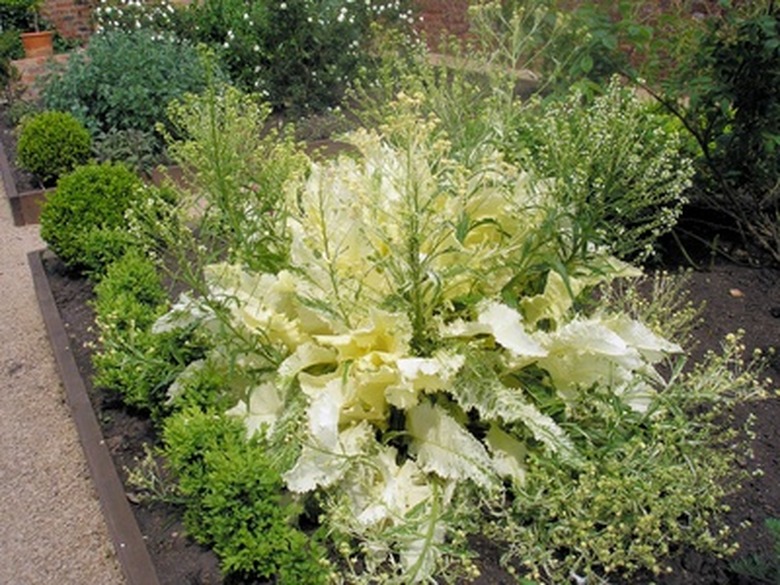How To Kill Horseradish
Things Needed
- Spade
- Glyphosate herbicide
- Pruning shears
Horseradish (Armoracia rusticana) has been used for thousands of years as a culinary herb, notes the University of Minnesota website. Though it's generally viewed as beneficial, its large size — Texas A&M University reports that it can grow as tall as 3 feet — can make it a nuisance. You have several options for killing and removing the horseradish plant if you no longer want it flourishing in your landscape.
Step 1
Dig out the horseradish plant. This removal option is ideal for plants that are smaller and have a less developed root network. Work a spade around the base of the herb in a downward-angled position. Once you've loosened the soil and disrupted the herb's root network, grasp it its base and pull it up and away from the ground. The uprooted plant can be discarded or added to your compost pile.
- Horseradish (Armoracia rusticana) has been used for thousands of years as a culinary herb, notes the University of Minnesota website.
- You have several options for killing and removing the horseradish plant if you no longer want it flourishing in your landscape.
Step 2
Spray the herb with a glyphosate-based herbicide. This broad spectrum chemical kills all vegetation in seven to 10 days, according to Oregon State University's website, and is ideal for large horseradish plants or yards that have too many of them growing to make manual removal practical. Apply the herbicide according to its manufacturer's instructions, as specific spraying recommendations vary widely according to manufacturer and product line. For the best results, wait for a day in which no rain is forecast and spray the herbicide evenly on all exposed parts of the horseradish plant.
Step 3
Chop down the horseradish plant. Use pruning shears and trim back any side branches and thick foliage to reveal the main stem, then cut this stem down to the ground. If the horseradish plant is very established, new shoots may struggle up from the cut base. Repeatedly cut back the shoots. Over time, the root network will starve and die.
- Spray the herb with a glyphosate-based herbicide.
- For the best results, wait for a day in which no rain is forecast and spray the herbicide evenly on all exposed parts of the horseradish plant.
Step 4
Stop watering the horseradish plant. This lush, foliage-dense herb requires lots of water to support itself. Ceasing watering will dry it out and kill it, though this method may take several weeks if your gardening soil is naturally moist.
Tip
You can also simply leave the horseradish alone if you live in an area that experiences frost. This warmth-loving plant can't survive the first frost of fall, notes the Virginia Cooperative Extension. The frost-killed plant will decompose over time and simply add more rich, organic content to the soil.
Warning
If you choose to kill the horseradish plant with herbicides, avoid getting the spray on any desirable vegetation. For example, if it's windy, spray it close to the plant to avoid the drifting of the herbicide droplets.
